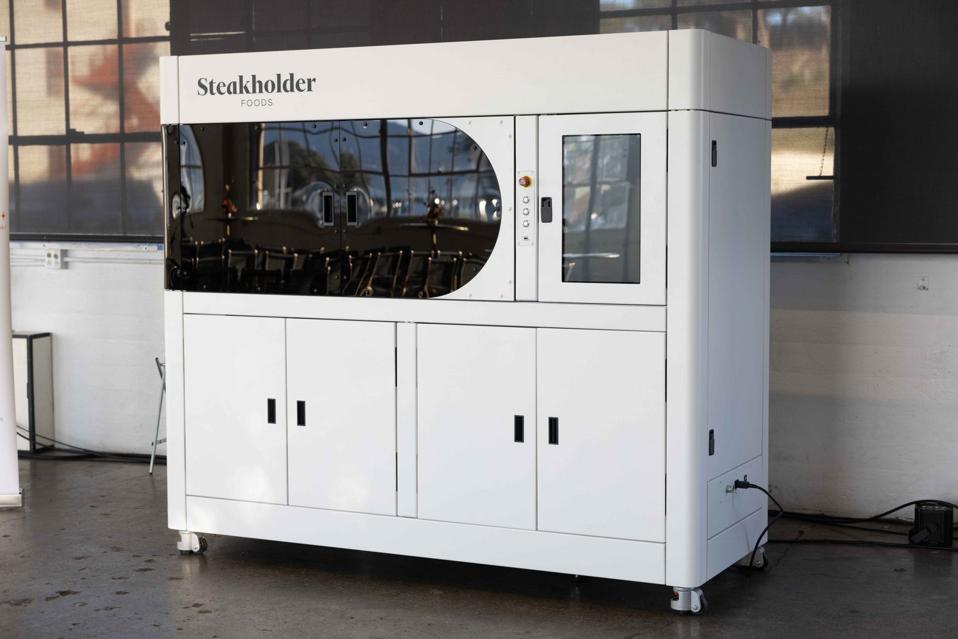“By unveiling a second new species of plant-based, 3D-printed seafood this month, we expect to position Steakholder Foods to sell and deliver its first DropJet printer in 2024, offering partners and customers a unique opportunity to benefit from the expanding global seafood market, while making the right kind of impact on the environment,” said Steakholder Foods CEO Arik Kaufman.
At present, cells are selected and cultivated in growth vats until they reach a stage where they can be transformed into an ink. This ink is then used for 3D printing at a larger scale. The potential market size is significant, with the company noting that approximately 7.6 million tons of shrimp are harvested annually. The retail price of shrimp, ranging from $20 to $40 per kilo, is driven up by the manual labor involved in shell and vein removal. This leaves a considerable margin for Steakholder Foods to introduce a profitable alternative shrimp product.
The company, however, has not disclosed the intended price point for its 3D printed shrimp. Additionally, Steakholder has not revealed its sales strategy, including whether it plans to sell directly to consumers, restaurants, distributors, or through supermarkets. Consequently, the economic aspects of this venture remain largely unknown. Moreover, Steakholder Foods has not provided specific comments on the taste of the shrimp, other than stating its goal to mimic the flavor of real shrimp.
So far, Steakholder Foods has focused on foods that are ready to cook, intended for cooking by the end user. As previously disclosed, there could be a benefit if products were ready to use, potentially saving additional time and energy. Currently, the actual volume of Steakholder’s production remains unknown. Following a $35 million loss in 2021, the firm reported drop of $10 million up to June 30, 2023. To hit the big time, Steakholder will need to scale up and reduce its production costs.
The core promise of Steakholder Foods, along with other firms specializing in 3D printed food, lies in the use of bioprinting techniques to create realistic and delicious food at scale. Even assuming that Steakholder Foods has accurately replicated the taste and texture of its products, there will be difficult hills to climb. A considerable amount of energy, nutrients, and costs are invested during the growth media step. It remains uncertain whether Steakholder Foods is capable of developing a more efficient and effective bioreactor, or if it is currently working on such a technology. Existing bioreactor companies could significantly impact their markets with the development of more sustainable and efficient systems.
Additionally, the ability of Steakholder Foods to scale up production is not yet clear. While the company employs a drop-on-demand approach, which has the potential to scale effectively, the specific volume and accuracy at which the company can currently produce remain unknown.
Steakholder Foods has been exploring additional share releases and sales to acquire extra capital. The company also has to raise its share price above $1 to maintain its NASDAQ listing. Currently, with a share price standing at $0.52, delisting could deprive it of the funding opportunities available to NASDAQ-listed companies. In 2022, Steakholder Foods invested $9.8 million in R&D and $3 million in marketing. The company also acquired the Belgian fat firm Peace of Meat for $20 million, which it later liquidated.
If Steakholder Foods manages to overcome its current difficulties, it could tap into a multi-billion dollar opportunity. By producing more ethical food more efficiently, the company could access various multi-billion dollar food markets. I for one will be curious to see if they can make the leap from rendering to plate.
Subscribe to Our Email Newsletter
Stay up-to-date on all the latest news from the 3D printing industry and receive information and offers from third party vendors.






